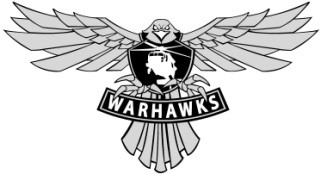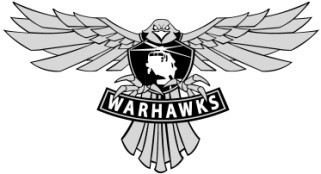Information
-
Audit Title
-
Client / Site
-
Conducted on
-
Prepared by
-
Location
-
Personnel
A-COMMAND FACTORS
-
1.00 Does the Commander support the resourcing of adequate computer equipment to allow the safety manager to perform his assigned duties
-
2.00 Is there a school trained ASO assigned to the TDA, TOE, MTOE authorized full-time position?
-
3.00 Has an appropriately trained additional duty aviation safety officer been appointed in aviation organization's without authorized ASO positions and in a non-aviation organization's not Staffed with full-time safety personnel to perform required safety and accident prevention functions?
-
4.00 Is a safety -trained in NCO or qualified individual appointed by the unit commander, in writing to assist the safety manager in aviation units?
-
5.00 For ASO MTOE positions at brigade level and below, does the safety manager work directly for and is he or she rated by the commander? For non-MTOE positions does the additional duty safety manager have direct access to the commander?
-
6.00 Has the commander completed the commander's safety course?
-
7.00 Has the commander established a written commander's safety philosophy that includes goals objectives and safety positions?
B- SAFETY ADMINISTRATION
-
1.00 Does the safety manager maintain a current library of safety regulations, accident prevention directives and instructional materials?
-
2.00 (WEIGHTED 2 POINTS) Are procedures for safety files and file administration established in the<br>SOP that describe how the system is managed?
-
3.00 Does the safety manager maintain current unit safety functional files?
-
4.00 Has the organization established written procedures for the safety awards program to describe the awards that are available to include impact awards, an awards budget and how the<br>program is managed?
-
5.00 Does the safety manager maintain historical documentation of awards presented to the unit and individuals?
-
6.00 Does the safety manager assist in the preparation, rehearsal, and review of the aviation and ground pre-accident plan?
-
7.00 Does the pre-accident plan specify procedures to be followed in the event of aviation and ground accidents?
-
8.00 Are procedures established to ensure the organization receives applicable<br>safety messages for assigned aircraft, air vehicles, related systems,<br>components, or repair parts, along with (non-aviation) safety messages<br>for assigned vehicles, related systems, components, or repair parts?
-
9.00 Are the responsibilities of aircrews/UAS Operators involved in accidents<br>established in the SOP?
-
10.00 Are procedures established to integrate risk-management into aviation and<br>ground mission planning and execution?
-
11.00 Do the safety management portions of the SOP list step by step<br>procedures for accomplishing program requirements?
C- REPORTS AND INVESTIGATIONS
-
1.00 Are administrative procedures for management and submission of accident or incident reports and investigations established in the organizations SOP?
-
C 2.00 Are abbreviated aviation accident reports, abbreviated ground action reports, and unmanned aircraft system accident report submitted for all applicable mishaps and file copies maintained?
-
3.00 Are abbreviated ground action reports submitted for all applicable mishaps and file copies maintained?
-
4.00 Does the ASO review accident/incident reports/investigations and help<br>implement corrections?
-
5.00 Are safety information bulletin boards established in the unit with the<br>required items?
-
6.00 Is follow up action documented on operational hazard report to include the responsible commander's signature and are completed reports maintained on file for two years?
D- INFORMATION COLLECTION
-
1.00 Are procedures for the survey and inspection programs established in the SOP?
-
2.00 Are annual accident prevention surveys performed?
-
3.00 Are all functional areas applicable to the organization evaluated during the annual aviation accident prevention survey?
-
4.00 When a new program manager assumed program management<br>responsibility of any functional area or sub-area as labeled in the ARMS<br>checklist, was a survey of that program performed, documented and<br>deficiencies entered in the unit’s hazard tracking system?
-
5.00 Are copies of previous safety surveys maintain on file?
-
6.00 Are monthly FOD surveys used as a source of information to detect<br>uncorrected hazards with corresponding entries on the unit hazard log when<br>warranted?
-
7.00 Are fire risk management surveys reviewed for hazardous conditions or deficiencies to be included in the organization's hazard tracking system?
-
8.00 Does the ASO monitor unit aviation maintenance programs, equipment improvement reports (EIRs), product quality deficiency reports (PQDRs), safety action Messages, POL and address uncorrected hazards on the hazard tracking system? <br>
E- HAZARD ANALYSIS AND TRACKING
-
1.00 Is the hazard identification and analysis and countermeasures implementation and control program (Hazard tracking system) established in the SOP ?
-
2.00 WEIGHTED 2 POINTS Has the organization implemented a file or log of hazards and deficiencies?
-
3.00 (WEIGHTED 3 POINTS) Are all hazards and deficiencies detected during accident prevention surveys that are not corrected immediately or addressed by program managers, entered on the organization's hazard tracking system DA form 4754 or equivalent?
-
4.00 Is follow-up action taken to correct noted deficiencies?
-
5.00 after an accident prevention survey, and other inspection results, does the Command Safety Council review the results and recommend corrective actions?
-
6.00 Does the safety manager assist the Commander in tasking appropriate individuals, developing courses of action and control options by tracking newly identified hazards on the hazard log?
-
7.00 Are the organizations' hazard tracking records maintained on file?<br>
-
8.00 Does each council meeting including review of unit hazard tracking log and present an opportunity for decision-making on proposed risk control options for newly identified hazards?
-
9.00 Does the safety manager monitor aviation life-support system (ALSS) to ensure all deficiencies that are not corrected by ALSS personnel are tracked on the units hazard tracking system?
F-SAFETY COUNCILS
-
1.00 Are the procedures for the safety Council established in the SOP?
-
2.00 Is a Command safety Council established that meets at least quarterly?
-
3.00 Does the command safety Council include appropriate membership?
-
5.00 Are Safety Council meeting minutes distributed to enhance corrective<br>actions on noted deficiencies?
-
4.00 Are minutes of the Command Safety Council meetings published with<br>action officers and suspense dates assigned to action items?
-
6.00 Does the commander approve and sign the council minutes?
-
7.00 Does the safety manager organize the Command Safety Council? <br>
-
8.00 Do Safety Council meeting minutes adequately reflect the activity<br>conducted during the meeting?
-
9.00 Are safety council minutes maintained on file?
G- SAFETY EDUCATION AND TRAINING
-
1.00 Are step-by-step procedures for the safety training meeting program established in writing?
-
2.00 (WEIGHTED 2 POINTS) Has the Commander established a safety<br>education and training program that ensures safety training meetings are<br>conducted monthly for full time organizations and quarterly for all others<br>that accomplishes training requirements?
-
3.00 Is mandatory safety training integrated into the unit training schedule?
-
4.00 Is documentation of safety training meetings maintained to include<br>summaries or other methods to facilitate make up training and retained on<br>file?
-
5.00 Is a “make-up” system described in the safety management SOP and<br>implemented to ensure all personnel receive the same quality of safety<br>training?
-
6.00 Does the unit conduct safety briefings for personnel newly assigned to the unit and is it adequately addressed in the SOP to describe how the objectives are accomplished? <br>
Sign Off
-
Evaluator
-
Evaluator's signature








